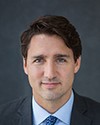Thank you very much, Mr. Chairman. Merci. Thank you all for this opportunity to meet today with the Standing Committee on Natural Resources.
This is my first appearance before the committee, and I'm pleased to discuss my department's portfolio and supplementary estimates.
You've already introduced the deputy minister of Natural Resources, Mr. Serge Dupont.
Mr. Chair, members of the committee, our government's top priority continues to be supporting jobs and growth, and sustaining Canada's economy.
As we are all aware, Canada is not immune to the uncertainties of the global economy, but Canada is continuing to outperform our G-7 colleagues. We're the only country in the G-7 to have gained back all of the jobs and all of the economic output lost during the recession. In fact, we’ve gained it all back and then some—over 600,000 jobs.
A large part of Canada's success is the result of our strong natural resource sector. In 2010 the energy, mining, and forest sectors accounted for 11.3% of Canada's real GDP, or $140 billion. These sectors provide significant employment in communities right across the country. In 2009 the energy, minerals and metals, and forestry sectors were responsible for directly employing close to 760,000 Canadians.
Canada is a leading exporter of natural resource commodities and resource-based technology and knowledge. On the world stage, we are seen as a global mining giant and an energy superpower.
That's why the Government of Canada is making targeted investments to support innovation in the resource sectors, and the jobs and economic growth that these sectors provide.
Mining and mineral processing are directly responsible for the jobs of well over 308,000 Canadians. Thousands more work in related industries. In 2010 mineral production contributed more than $35 billion to our GDP. Canadian mineral exports accounted for $84 billion, and 21% of total exports came from minerals.
Many Canadians would be surprised at just how big a presence Canada's mining sector has in the world, with over 50% of equity raised in Canadian stock exchanges.
I was recently in China attending the China Mining Forum where numerous Canadian companies operate. I was impressed by their level of awareness of Canadian expertise in the mining sector. While there are issues surrounding sub-national governments, there is great potential for Canadian companies in China.
I'd like to acknowledge the work of this committee on this important file. I know that your current study of resource development in Canada's north will be beneficial, and I look forward to your final report.
NRCan is pleased to cooperate with the committee's study in any way we can.
With regard to the North, our government is making progress on many of the issues this committee has identified, such as the economic impact of mining in the north, shared responsibilities, aboriginal involvement, the environmental assessment process and regulatory system.
These numbers are all of vital importance to Canada's economy. Much of Canada's resource wealth—gold, silver, copper, zinc, diamonds, and oil and gas, and even rare earth elements—can be found in our vast northern lands.
I witnessed the potential of the north first-hand this summer when I joined the Prime Minister on his annual tour, and visited Meadowbank gold mine. The mine is providing great opportunity to the surrounding communities. Indeed, the mayor of Baker Lake told me that the unemployment rate in their community, which was over 40%, is now 2%—and he assured me that he wouldn't hire either of those two people either.
Just like mining, the forest sector represents the lifeblood of hundreds of Canadian communities. So our government is making unprecedented investments to help transform Canada's forest sector towards higher-value activities and global markets.
During my trip to China and Japan, I saw first-hand the dramatic progress we are making in growing and diversifying markets for Canadian forest products through initiatives such as Canada wood export program. Canada's lumber exports to China have doubled every year during the past five years. This year alone, exports in the first nine months of the year are up nearly 120% from levels just a year ago.
Thousands of Canadians are working in the forest sector today as a result of our efforts to expand demand for Canadian forest products in the fast-growing Asian markets.
Some of the initiatives covered in supplementary estimates (B) are supporting these important market expansion programs. In supplementary estimates (B), $59.4 million will assist the continued transformation of Canada's forest sector through innovation, product diversification, and expanded opportunities for exports.
Finally, Canada's energy sector is a cornerstone of our national economy, and in an energy-hungry world, this sector is poised for great growth.
It is a dynamic industry with the right resource base, workforce, innovative spirit, leadership, and it's in the right environment to thrive like it never has before.
Canada is the second-largest producer of uranium, the third-largest producer of natural gas and hydroelectric power, and the world's sixth-largest producer of oil. We have the third-largest proven oil reserves in the world—almost all in the oil sands. These enormous energy assets are generating economic wealth across the country. In fact, energy represents roughly 7% percent of our gross domestic product, and creates hundreds of thousands of direct and indirect jobs throughout Canada.
Last year, for example, the energy sector provided direct employment for more than 270,000 people. It is estimated that last year Canada's oil and gas industry paid more than $4 billion in taxes and $12 billion in royalties. These funds are being used across Canada to support our social systems, including our health and education systems.
And thanks to Canada's highly skilled work force and strong innovation, we are capable of increasing our energy production in an environmentally and economically sustainable manner.
This includes a growing portfolio of renewable energy, including hydro power, bioenergy, and wind. Many of our investments in innovation are in clean energy, and they're being funded by allocations through supplementary estimates (B). Additional NRCan funding included in the $469.7 million in supplementary estimates (B) will support clean energy programs to strengthen Canada's economy and improve its environmental performance.
Another incredibly important energy sector is Canada's strong nuclear industry. As the members of this committee are aware, we have now completed the sale of the CANDU reactor division to an entrepreneurial Canadian company, SNC-Lavalin. This is a critical step in strengthening Canada's nuclear industry while reducing taxpayers' exposure to nuclear commercial risks.
Supplementary estimates (B) is requesting significant funding for Atomic Energy of Canada Limited. This funding will enable AECL to meet operational requirements, including isotope production, ensure safe and reliable operations at the labs at Chalk River, and meet contractual obligations and cover costs associated with the divestiture of the CANDU reactor division. I can assure this committee that this funding is necessary to ensuring that we meet our obligations.
Mr. Chair and members of the committee, Natural Resources Canada has an immense and diversified portfolio—all directly linked to Canada's economic health and prosperity.
Nevertheless, I don't want to leave you with the impression there are no challenges ahead. Clearly, we must continue to expand our markets beyond our current base of strength in North America. In order to realize the full potential of our abundant resource endowment, we need a timely, effective regulatory regime to develop the projects and infrastructure to diversify our markets into the Asia-Pacific region. This is urgent.
No matter how large our assets or our advancements in technology, they are of little benefit if our regulatory environment acts as a deterrent to their development. We're working on that.
We must also continue to increase the environmental performance of our energy sector, which our government has supported with over $10 billion in investments. As I've recently promoted in my travels abroad, Canada is a reliable, environmentally friendly source of energy and natural resources. Everywhere I go my message is the same: Canada is a market-based, responsible, and reliable supplier and we are open for business and investment.
Thank you again for this opportunity to speak to this committee. I would be pleased to answer your questions.













